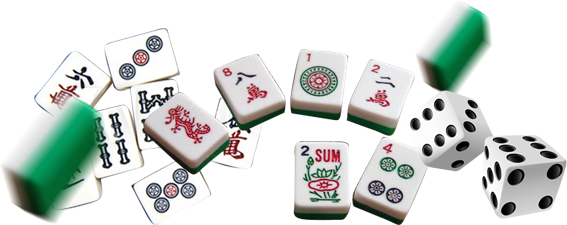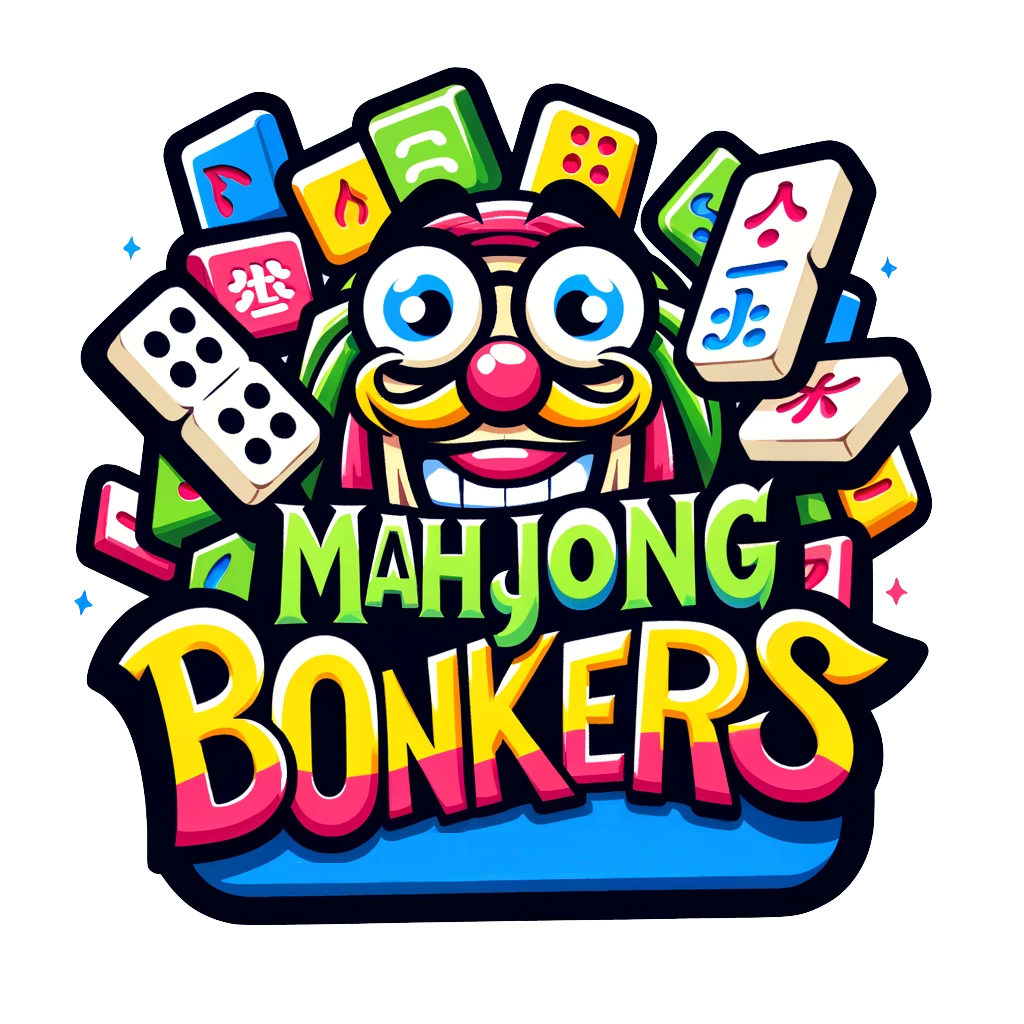
Basic Rules of Mahjong
Objective of the Game
The objective of the game is to collect tiles to form a Mahjong hand. Players take turns picking one tile from the wall and discarding one tile. When a player picks up a tile that gives a valid Mahjong hand, the player wins. Please note that on this website you cannot win any real money. You can buy for fun credits and with this credits you can play against your friends from all over the world.
Tiles
A full Mahjong tile set contains 144 tiles. There are three suits: Bamboo, Characters and Dots. Each suit has tiles numbered one to nine. There is four of each tile. There are also honour tiles: dragons and winds. The dragons are named Red, White and Green. The winds are East, South, West and North. There is four of each dragon type and four of each wind in the tile set.
In many rule sets there are also four season tiles and four flower tiles.
The Game Flow
Players start with 13 tiles each. Each s assigned a wind (East-South-West-North). East starts the game by picking a tile from the wall. Players then take counter-clockwise turns picking a tile from the wall and then discarding one tile from the hand. It is also possible to claim a tile discarded by another player under certain circumstances. In such cases, the player to the right of the claiming player becomes next in turn so some players may lose their turn in a go-around.
Players shall always have a total of 13 tiles in hand and/or declared, until Mahjong is declared. (A Mahjong hand contains 14 tiles.)
In games that consist of several hands, the concept of prevalent wind is used. The game will then consist of one to four rounds, each with a prevalent wind (starting with east). In a round, players switch winds after each hand (with some exceptions in some rule sets), i.e. the player who was east becomes south, south becomes west and so on until all players have played as east. When the round is finished, the prevalent wind is changed (from east to west, west to south, south to north) and a new round starts. The prevalent wind is shown in the middle of the table.
Claiming Tiles
- A player may claim a discarded tile from the player to his left (i.e. if the claiming player is next in turn) to declare a chow (a three-tile same-suit straight).
- A player may claim a discarded tile from any other player to declare a kong (four-of-a-kind) or pong (three-of-a-kind).
- A player may claim a discarded tile from any other player to declare Mahjong.
In case several players want to claim the same discard, the following priority list is used:
- Mahjong
- Kong
- Pong
- Chow
If two players want to claim a tile for the same reason, the player who is closest to being next in turn gets the tile.
Note that it is not always wise to claim discarded tiles. For example, sets that have not been declared are worth more than declared sets when going Mahjong.
Mahjong Hands
A Mahjong hand normally consists of four sets of three or four tiles and one pair. A set is a same-suit triplet (pong), a same-suit quadruplet (kong) or a same-suit straight (chow). Each rule set also has a number of special hands that allow Mahjong or score better than usual. Also, many rule sets have additional requirements for actually going Mahjong (see below).
Scoring
The score for a hand is calculated in two steps. First, the sets and the pair give minipoints. Going Mahjong also usually gives minipoints. The amount of points and which sets and pairs that give minipoints vary with the game rules.
Second, the hand is analysed for patterns that depend on the game rules. Fans (also called funs, or yakus) are awarded for the different patterns. Each fan doubles the minipoints once. The resulting score is the hand score.
In some rule sets, the hand score is irrelevant and only the number of fans is counted.The score for a hand is calculated in two steps. First, the sets and the pair give minipoints. Going Mahjong also usually gives minipoints. The amount of points and which sets and pairs that give minipoints vary with the game rules.
Second, the hand is analysed for patterns that depend on the game rules. Fans (also called funs, or yakus) are awarded for the different patterns. Each fan doubles the minipoints once. The resulting score is the hand score.
